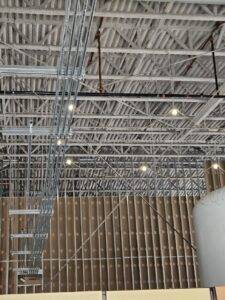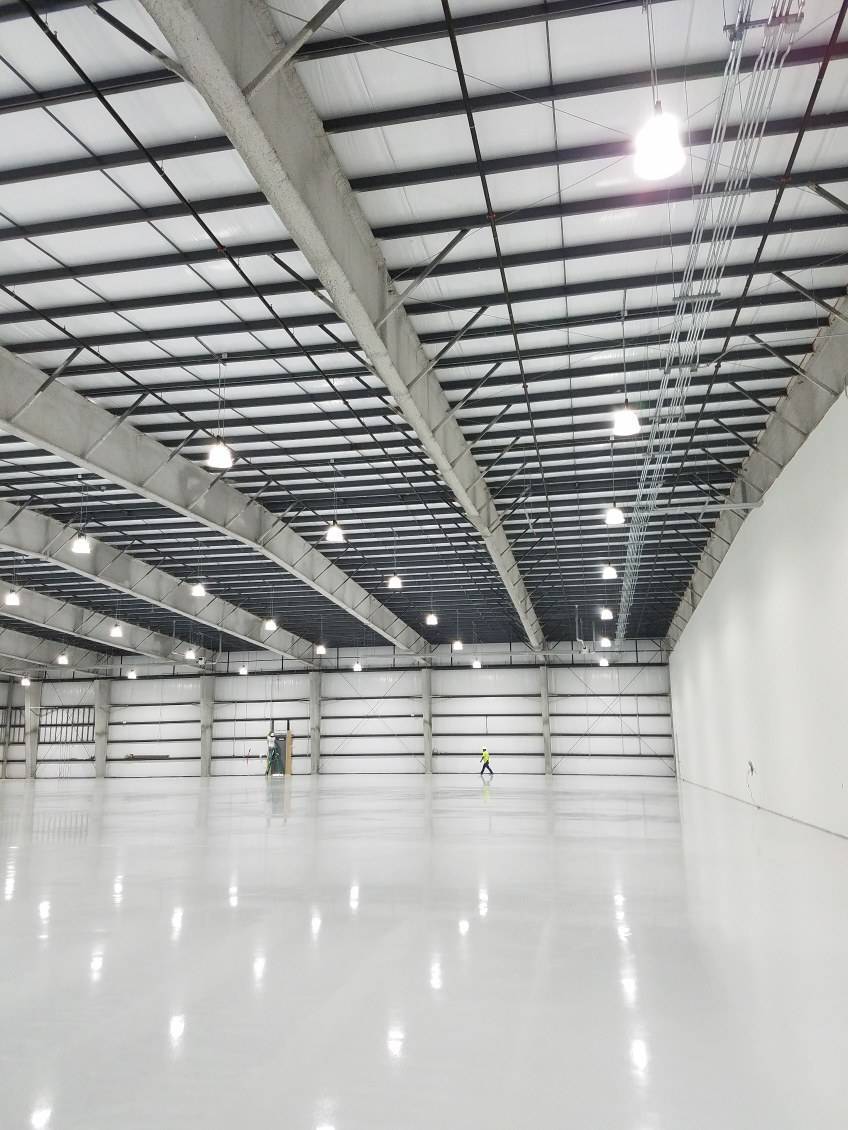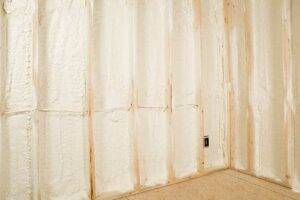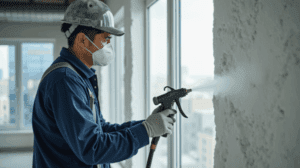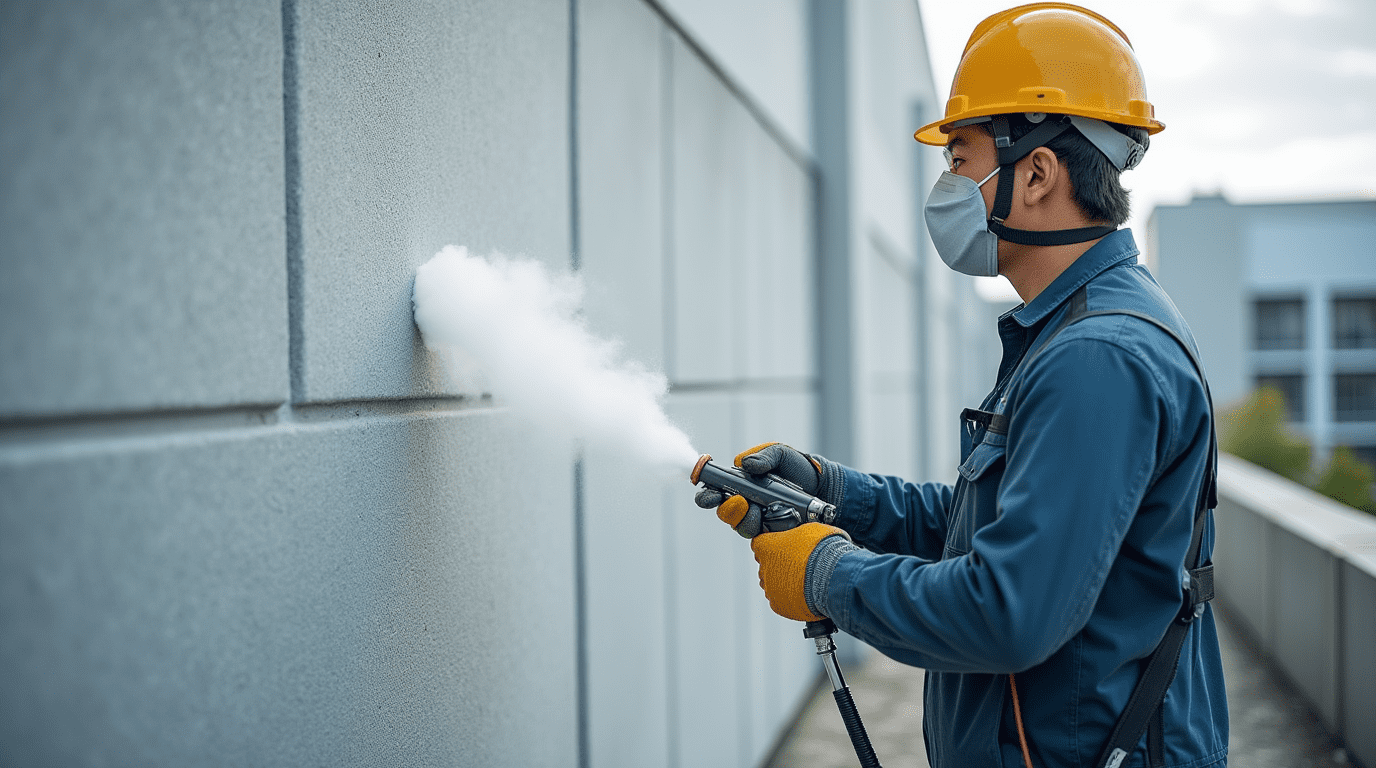Spray Foam Insulation: Energy Savings and Comfort When Every Dollar Counts
Bahl Fireproofing
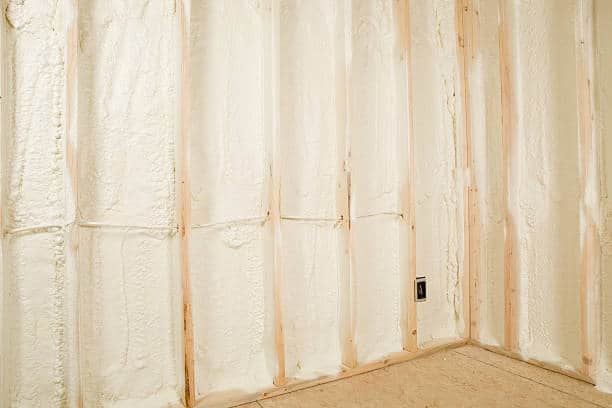
Spray Foam Insulation: Energy Savings and Comfort When Every Dollar Counts
TLDR: Spray foam insulation can deliver verified energy savings, with EPA and DOE studies showing typical reductions up to 15-30% for air sealing and insulation upgrades compared to baseline conditions, along with improved comfort and indoor air quality. In harsh climates across Texas, Kansas, and Oklahoma, closed-cell and open-cell spray foam options provide measurable comfort improvements, moisture control, and long-term thermal performance that pays back through lower utility bills and increased property value.
When utility rates climb and weather extremes become the norm, your building’s thermal envelope becomes your first line of defense against rising costs and uncomfortable indoor conditions. Spray foam insulation isn’t just another building material. It’s a strategic investment that addresses air leakage and heat transfer simultaneously, two factors that account for up to 40% of energy waste in typical structures according to the Department of Energy.
In the commercial and residential markets across the South Central states, we’re seeing property owners face a double challenge: summer temperatures regularly exceeding 100°F and winter cold snaps that strain HVAC systems to their limits. Meanwhile, electricity costs continue their upward trajectory with no relief in sight. These conditions make energy efficient insulation more than a nice-to-have upgrade. It becomes essential infrastructure for economic resilience and occupant comfort.
At Bahl Fireproofing, we’ve installed spray foam insulation systems in warehouses, manufacturing facilities, office buildings, and homes throughout the region. The performance data from these projects consistently shows one thing: properly installed spray foam delivers measurable results that translate directly to lower operating costs and improved indoor environments, regardless of what the weather or economy throws at you.
Why Energy-Efficient Insulation Matters More Than Ever
The economics of building performance have fundamentally shifted. A decade ago, insulation upgrades were optional efficiency improvements. Today, they’re operational necessities that directly impact your bottom line or household budget.
ENERGY STAR data shows that heating and cooling typically represent 50-70% of energy use in commercial and residential buildings. When your thermal insulation fails to control heat transfer or allows air infiltration, you’re essentially paying to condition outdoor air instead of maintaining comfortable indoor temperatures. In harsh climate zones like ours, that inefficiency compounds quickly.
Traditional batt or blown insulation addresses only one part of the thermal envelope equation: resistance to conductive heat transfer. But air leakage through gaps, penetrations, and building assembly joints often causes more energy loss than conduction alone. This is where spray foam insulation fundamentally changes the performance profile of your building envelope.
How Spray Foam Works: The Science Behind the Savings
Spray foam insulation is a two-component polyurethane system that expands and cures in place, creating both thermal resistance and an air barrier in a single application. Understanding the two primary types helps you select the right solution for your specific needs.
Closed-Cell Spray Foam expands to roughly 30 times its liquid volume and cures into a rigid, dense material with an R-value of approximately 6.0-7.0 per inch. This high-density foam creates a vapor barrier, adds structural rigidity, and provides the highest thermal resistance per inch of any commonly available insulation material. It’s particularly effective in exposed applications, below-grade installations, and anywhere moisture control is critical.
Open-Cell Spray Foam expands to about 100 times its liquid volume, creating a softer, more flexible foam with an R-value of approximately 3.5-4.0 per inch. While it provides lower R-value per inch than closed-cell, it’s more cost-effective for achieving code-required R-values in wall and ceiling assemblies where vapor barriers aren’t needed. Open-cell foam is vapor permeable and provides excellent sound dampening characteristics. For comprehensive guidance on insulation types and applications, the Department of Energy provides detailed technical resources for commercial and residential decision-makers.
Both types share one critical advantage: they air seal as they insulate. According to Building Science Corporation research on air barrier systems, reducing air leakage is often more cost-effective for improving energy performance than simply adding R-value to assemblies that leak air. Spray foam addresses both factors simultaneously, creating a continuous thermal and air barrier that traditional insulation cannot match.
Documented Cost Savings and Performance Data
Energy savings from spray foam insulation vary based on existing conditions, climate zone, building use, and installation quality. ENERGY STAR guidelines on air sealing and insulation suggest that comprehensive air sealing combined with proper insulation can reduce heating and cooling costs by 15% on average, with some retrofits in poorly insulated buildings achieving savings up to 30%.
In our Texas, Kansas, and Oklahoma markets, the economic impact shows up quickly. A 10,000 square foot commercial building spending $20,000 annually on HVAC could see $3,000-$6,000 in annual savings after a comprehensive spray foam retrofit. For residential applications, a 2,500 square foot home with $2,400 in annual cooling and heating costs might save $360-$720 per year. These savings are representative examples; actual results depend on building conditions, utility rates, and installation quality.
The Department of Energy’s cost-effectiveness studies indicate that spray foam insulation typically achieves payback periods of 5-10 years in existing buildings, with new construction applications providing immediate operational savings that offset the premium over traditional insulation. These timeframes improve when utility rates increase or when local rebate programs reduce upfront costs.
Beyond direct energy savings, spray foam delivers measurable improvements in HVAC equipment lifespan by reducing system runtime and temperature cycling. When your heating and cooling equipment operates less frequently to maintain setpoints, you extend service intervals and delay capital replacement costs.
Comfort, Indoor Air Quality, and Moisture Control
Energy efficient insulation doesn’t just reduce utility bills. It fundamentally improves how buildings perform for occupants and protects the structural investment over time.
Temperature consistency is the most immediate benefit property owners notice after spray foam installation. Traditional insulation allows air infiltration that creates hot and cold spots, drafts, and temperature variations between rooms or floors. Spray foam’s air sealing properties eliminate these comfort problems by maintaining consistent temperatures throughout conditioned spaces.
Indoor air quality improves when outdoor pollutants, allergens, and humidity stay outside where they belong. The airtight building envelope created by spray foam insulation prevents unconditioned air from entering through wall cavities, rim joists, and other hidden pathways. This controlled ventilation approach, combined with proper mechanical ventilation systems, delivers better air quality than leaky buildings that mix outdoor air indiscriminately.
Moisture control is particularly critical in our climate zones, where summer humidity combined with air conditioning creates condensation risks in wall and ceiling assemblies. Closed-cell spray foam acts as both insulation and vapor barrier, preventing moisture migration that can reduce the risk of mold growth, wood rot, and structural degradation. Even open-cell foam improves moisture performance by eliminating air movement that carries water vapor into assemblies. Proper installation and building envelope design remain essential for comprehensive moisture management.
For commercial facilities in manufacturing, food service, or healthcare applications, these moisture control benefits translate directly to reduced liability risk and improved operational compliance with building codes and industry standards.
Real-World Application: Warehouse Retrofit in Central Texas
Last year we completed a spray foam insulation retrofit on a 45,000 square foot distribution warehouse outside Austin. The metal building had minimal original insulation and significant air leakage through wall and roof panels, resulting in extreme temperature variations and cooling costs exceeding $4,500 monthly during summer.
We installed 3.5 inches of closed-cell spray foam to the underside of the metal roof deck, achieving R-25 thermal resistance while simultaneously air sealing the entire roof assembly. We addressed the walls with 2 inches of closed-cell foam for R-12 performance and vapor control.
Post-installation monitoring showed interior temperatures stabilized within ±5°F throughout the facility, compared to previous variations of 15-20°F between sunny and shaded areas. Summer cooling costs dropped to approximately $2,800 monthly, representing a 38% reduction in HVAC operating expense. The facility manager reported that order picking productivity improved because warehouse staff no longer worked in oppressively hot conditions during afternoon shifts.
This project represents documented performance in a real-world application. Your specific results will depend on existing conditions, building use, local climate factors, and installation quality.
Frequently Asked Questions
How long does spray foam insulation last?
Manufacturer technical data sheets list 80+ year service life for properly installed spray foam insulation systems. Real-world performance in our region supports these claims. Unlike batt or blown insulation that can settle, compress, or degrade from moisture exposure, cured spray foam maintains its thermal performance and air sealing properties indefinitely when undisturbed. The material doesn’t sag, shift, or decompose under normal building conditions.
Is spray foam insulation safe after it cures?
Yes. Cured spray foam is an inert polymer that does not off-gas or present health risks to occupants. All insulation should be installed by a trained and certified contractor following manufacturer and EPA safety protocols. During installation, proper ventilation and contractor safety equipment are essential, as uncured foam components require professional handling. After the 24-hour cure period, the material meets all building code requirements for occupied spaces. Installers must follow manufacturer safety protocols and EPA guidance to ensure full curing and safe re-occupancy. EPA Indoor airPLUS certification includes spray foam as an approved insulation material for residential applications.
What’s the realistic payback period for spray foam in my building?
Payback varies based on current insulation levels, utility rates, building use, and climate factors. Commercial buildings with high HVAC runtime often see 5-7 year payback periods. Residential applications typically achieve payback in 7-10 years. When factored into new construction, the operational savings often offset the material premium within the first few years. Tax incentives and utility rebate programs can significantly improve these timeframes. Contact our team for a project-specific analysis based on your actual conditions.
Can spray foam be installed in existing buildings or only new construction?
Both. We regularly install spray foam in retrofit applications including attics, crawl spaces, rim joists, and wall cavities. Existing buildings often deliver the highest return on investment because you’re upgrading from minimal or degraded insulation to high-performance thermal insulation. New construction benefits from lower installation costs and the ability to optimize building systems around improved envelope performance.
Do I need a professional contractor or is this a DIY project?
Spray foam insulation requires professional installation. The two-component chemical system demands precise mixing ratios, proper application techniques, and safety protocols that only trained contractors can deliver. Improper installation creates fire hazards, failed air sealing, and wasted material costs. Work with experienced thermal insulation contractors who carry appropriate licensing, insurance, and manufacturer certifications. At Bahl Fireproofing, our crews maintain ongoing training and follow strict quality control procedures on every project.
Key Takeaways
- Spray foam insulation delivers both thermal resistance and air sealing in one application, addressing the two primary causes of energy waste
- Closed-cell foam provides R-6 to R-7 per inch with vapor barrier properties; open-cell delivers R-3.5 to R-4 per inch with sound dampening benefits
- EPA and DOE studies show typical energy savings of 15-30% for air sealing and insulation upgrades, with actual results depending on baseline conditions
- Indoor comfort improves through temperature consistency, draft elimination, and moisture control that protects both occupants and building structure
- Professional installation by certified contractors is essential for safety, performance, and warranty compliance
- Both commercial and residential applications benefit from reduced operating costs and improved property value in harsh climate zones
Get Professional Results That Perform
In tough economic times and tougher climate conditions, your building’s thermal envelope directly impacts your operating costs and occupant comfort. Spray foam insulation delivers measurable performance that pays dividends for decades through lower utility bills, reduced maintenance, and improved indoor environments.
At Bahl Fireproofing, we’ve built our reputation on delivering exactly what we promise: professional installations that meet code requirements, manufacturer specifications, and your performance expectations. Whether you’re upgrading an existing facility, building new construction, or addressing specific comfort and energy problems, we’ll provide straight answers about what spray foam can accomplish in your specific application. Reach out today for a project consultation and let’s discuss how energy efficient insulation can strengthen your building’s performance when every dollar counts.
Disclaimer: This article provides general educational information about fireproofing and insulation systems and does not constitute professional engineering advice or product specification. System selection must be based on project-specific fire ratings, thermal requirements, acoustic performance needs, environmental conditions, substrate requirements, and budget constraints. Code requirements vary by jurisdiction and project type. Always consult with a licensed professional and verify UL or FM assembly listings before finalizing specifications.

